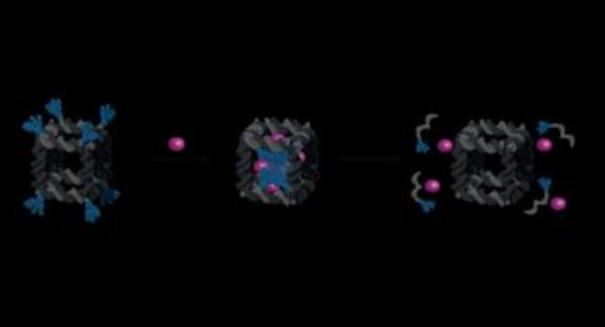
The DNA cages can be forced to release drugs in the company of a specific nucleic acid sequence.
Researchers at McGill University have discovered that nanoscale “cages” made from strands of DNA can encase small-molecule drugs and deliver them in reaction to a specific stimulus. The findings may one day lead to the utilization of biological nanostructures to administer drugs to diseased cells in patients. The results could also lead to novel ways of designing DNA-based nanomaterials.
“This research is important for drug delivery, but also for fundamental structural biology and nanotechnology,” notes lead researcher Hanadi Sleiman, a professor of chemistry at McGill University.
DNA contains the genetic data of all living organisms from one generation to the next. However, strands of DNA can also be utilized to construct nanometer-scale structures. The researchers first developed DNA cubes utilizing short DNA strands, and altered them with lipid-like molecules. The lipids can perform like sticky patches that come together and participate in a “handshake” inside the DNA cube, developing a core that can possess payloads like drug molecules.
The researchers also discovered that when the sticky patches were positioned on one of the outside faces of the DNA cubes, two cubes could join together. This novel method of assembly “opens up a range of new possibilities for designing DNA-based nanomaterials.”
The researchers have previously shown that gold nanoparticles can be packed and released from DNA nanotubes, offering early evidence that drug delivery might be possible. However, this study is the first time that small molecules have been plied in such a manner utilizing a DNA nanostructure.
According to co-author Thomas Edwardson, a doctoral student at McGill University, DNA nanostructures have multiple potential benefits over the synthetic materials frequently utilized to administer drugs within the body.
“DNA structures can be built with great precision, they are biodegradable and their size, shape and properties can be easily tuned,” Edwardson says.
The DNA cages can also be forced to release drugs in the company of a specific nucleic acid sequence.
“Many diseased cells, such as cancer cells, overexpress certain genes,” Edwardson posits. “In a future application, one can imagine a DNA cube that carries drug cargo to the diseased cell environment, which will trigger the release of the drug.”
The study’s findings are described in greater detail in the journal Nature Chemistry.
Leave a Reply